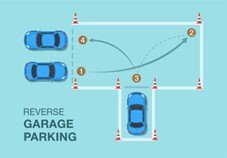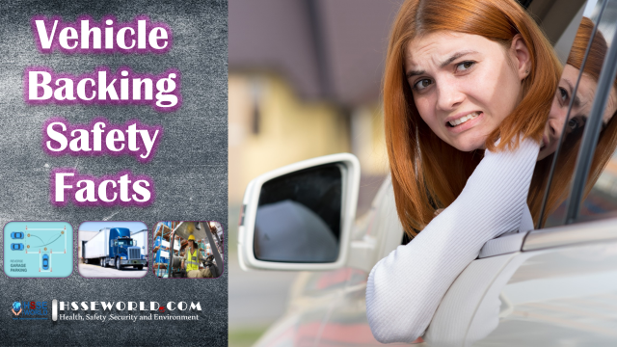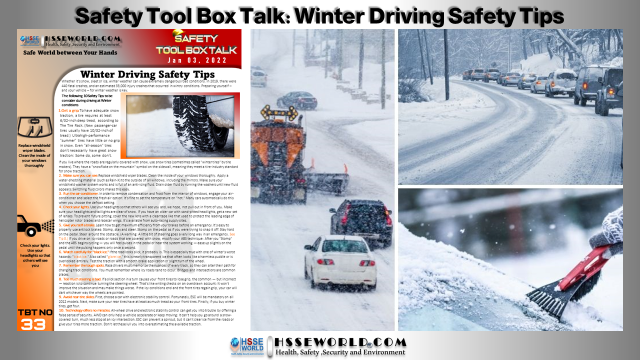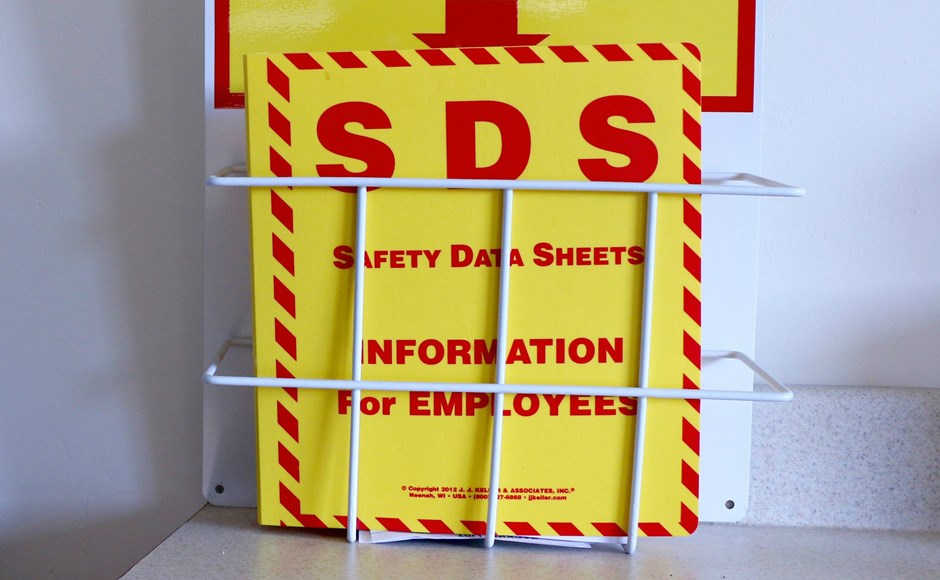Most drivers spend less than 1% of their driving time in reverse, yet national statistics indicate that about one-quarter of all collisions occur while backing. Backing incident rates are even higher among fleet drivers, accounting for up to half of all on-the-job vehicle collisions.
Though backing incidents often occur at low speeds, collisions while driving in reverse can result in severe and fatal injuries. In 2019, 10,335 drivers in Texas cited backing as a factor in a vehicle crash. Of those, thirty-six individuals received serious injuries, and eight individuals died. Nationally, backover incidents kill an estimated 200 people annually and injure more than 12,000.4
Backing carries its own set of driving risks. However, backing incident rates and related injuries are expected to decrease as a growing number of vehicles with rear-vision camera systems and other safety technology features hit the road.
in this article we will outline Facts about Vehicle Backing safety as follows:
- General Vehicle Backing Safety Practices
- Safe Backing Practices for Large Vehicles or Vehicles with Trailers
Also Read: 4 Major Forklift Accidents and Prevention

Introduction
The Case for Integrating Safety Technology into Company Vehicles
In May 2018, a federal regulation took effect requiring all new cars sold in the U.S. to have rear-vision cameras and video displays to help drivers avoid accidents while backing. Some automakers are going further by adding backup warning sensors and reverse automatic braking.
Rear automatic braking, an option in only 5% of vehicles before 2018, resulted in a 62% drop in reported backup accidents in cars with that equipment. Combining automatic braking with rear-vision cameras and sensors cut reverse crashes by 78%.
While this technology still has room for improvement, reverse braking systems currently focused on preventing collisions with obstacles will soon protect against pedestrian crashes. Front automatic braking will become standard in most cars in 2022, but there is currently no plan to make it standard for backing.
Until this technology becomes standard on all vehicles, one of the best ways for employers to prevent backing collisions is to create a company-wide vehicle training program that includes the following safe backing practices.
Also Read: Tool Box Talk: Winter Driving Safety Tips
General Vehicle Backing Safety Practices
Drivers’ poor techniques cause most backing accidents. Limited vision out of back windows or around long truck beds and equipment bodies can result in drivers not seeing other vehicles, obstacles, coworkers, or pedestrians.

Safe Parking Tips
Encourage drivers to avoid backing a vehicle unless necessary. Use these added safety tips when parking.
> Choose pull-through parking spaces when available.
Driving forward into a pull-through stall can keep motorists from having to back out of a parking space. If a pull-through parking space is not available, back into the stall when arriving, rather than backing out of it when leaving.
Basic Vehicle Backing Steps
• Adjust mirrors.
Check the rearview and side mirrors on the vehicle, and adjust them to make blind spots as small as possible. While mirrors and rear-vision cameras provide added visibility, drivers should not depend solely on this technology. These devices can cause drivers to lose depth perception when backing.
• Look out the back window.
Backing up requires drivers to turn their heads and bodies to the right to see beyond the headrest and through the back window. To improve balance, drivers should drape
their right arm over the seat’s back while their left-hand grips the steering wheel.
• Reverse slowly.
The reverse is a more powerful gear than drive, so carefully and slowly accelerate when backing. It is more difficult to maintain steering control when the vehicle is in reverse.
• Know the direction to turn the wheel.
The direction to steer a vehicle when backing depends on whether a trailer is attached. When backing a vehicle without a trailer, the driver should turn the steering wheel in the direction they want the rear of the vehicle to go. If backing a vehicle with a trailer, drivers should steer in the opposite direction they want the trailer to go. Practice is the best instruction.
> Park defensively.
Choose an easy-exit parking space that does not crowd nearby vehicles and is away from other obstacles. Park in the center of the parking space.
> Think ahead when parking in alleys.
If an alley does not permit vehicles to drive all the way through or does not provide room to turn around, back into the alley (if local ordinances allow). Backing into the alley enables motorists to drive forward into the street when leaving.
> Look at the surroundings
Scan the area and look for hazards, such as poles, trees, buildings, or people. Avoid parking near traffic lanes or pedestrian areas. Continually check all mirrors while backing.
> Perform a walk-around.
Walk around the vehicle before backing it and after it has been parked for a while.
Look for children, animals, soft or muddy areas, potholes, tire hazards, or other possible dangers. Every backing situation is different. Drivers may back out of the same spot day after day, but new hazards can arise.
> Do not delay after the walk-around.
Return to the vehicle and start backing within a few seconds after finishing the walk-around. Do not give people or obstacles time to change behind the vehicle before backing.
Other Backing Safety Guidelines

Most drivers back infrequently and, therefore, lack a high level of confidence in doing
it. For drivers who are unsure of their backing ability, take the time to practice. Set up some cones to back around or find an empty parking lot to learn how to back into stalls. Get to know the vehicle and its blind spots. Use the following backing tips to reduce and prevent crashes:
Also Read: Skid Steer Loaders Risks
- Never Assume.
Never assume people will stop or not walk behind a backing vehicle. If a driver sees someone in the mirror, stop until the individual is clear and in a safe position.
- Know the clearances.
When preparing to back, always look for low-hanging trees, electrical wires, or any other potential clearance-related problem.
- Use a spotter, if available.
If a reliable person is available to guide the driver back, use them. Roll the window down to hear any verbal instructions or warnings. Agree on hand signals before starting. Keep the spotter in sight, preferably in the driver’s side mirror. Encourage the spotter not to walk backward while giving instructions. Stop backing if the spotter is not in the driver’s sight.
- Avoid distractions.
Turn off the sound system when preparing to drive in reverse. Silence the phone and remove all other distractions that can draw attention away from safely backing.
- Back slowly.
Creep or use an idle speed when backing. Drivers should cover the brake with their feet and keep the backing distance to a minimum.
Safe Backing Practices for Large Vehicles or Vehicles with Trailers
Backing Large Vehicles or Vehicles with Trailers

Vehicle backing is particularly dangerous in workplace settings. Large vehicles, such as semi-trucks, construction vehicles,
and vehicles equipped with trailers, present more severe
backing hazards. These vehicles have significantly larger blind spots than standard vehicles and, if hauling a trailer, pivot in the opposite direction when backing. Practice and proper backing safety training can reduce the chances of collisions and save companies millions of dollars in damages, lawsuits, and insurance costs.
In addition to the steps mentioned above, the following tips can provide extra safety when backing large vehicles and vehicles with trailers.
- Use the steering wheel as a visual reminder.
Backing up a trailer can be counter-intuitive because the trailer moves in the opposite direction of the vehicle. When backing a trailer, it can jut out at a 90-degree angle from the vehicle. At its worst, the trailer can double back around until the vehicle and the trailer are touching sides, a situation known as a jackknife. One trick to better visualize the opposite movement of a trailer is to think of the steering wheel’s top part as moving the vehicle and the bottom part as moving the trailer. When a driver steers right, the top of the wheel goes right, and the bottom of the wheel goes left, meaning the trailer will go to the left, and vice versa.
- Trucking professionals always use G.O.A.L. (Get out and look!)
As mentioned earlier, the wider blind spots on trucks and road equipment make it even more important that drivers of large vehicles get out and examine the area. Hazards previously missed – like debris, pallets, nails, screws, and bolts – may become apparent. Look for trailer tails that are not closed and any other obstacle that may make backing hazardous. Remember, drivers cannot see directly behind them when backing a trailer.
- Clear the area of any movable obstacles.
If a forklift or any other moveable obstacle is too close to the driver’s approach path, ask to have it moved. It does not matter if other drivers get past it every day. They are not the ones behind the wheel at the time.
- Use the three points of the contact system. To reduce or prevent
injuries, use a three-point contact system when entering and exiting a large vehicle. The three points of the contact system mean that three of an individual’s four limbs – two hands and one foot or two feet and one hand are in contact with the vehicle at all times.
- Use landmarks to help gauge direction while backing.
Any visual aids that remain stationary during backing can help drivers with their approach angle. Even painted lines or cracks in the pavement can serve as guides.
- Increase the vehicle’s visibility to others.
Turn on the vehicle’s hazard lights and hit the horn a few times before backing. If a driver lacks confidence in their backing abilities, their instinct may be to avoid having others notice them. However, drivers need to caution people to stay clear, even if the vehicle has a backup alarm. As backup alarms become more common, the warning sound can lose its authority.
- Choose a spotter wisely.
It is best if someone who understands how the vehicle functions — like another trucker or heavy road equipment driver –serves as
a spotter. Spotters should be familiar with what the driver sees and experiences while in the driver’s seat.
- Watch the vehicle’s tires and axles.
Too often, drivers focus solely on the back of the trailer and whether it is moving in the right direction. However, the vehicle’s tires and axles can give the driver a more accurate sense of direction.
- Do not hesitate to start over.
It can be nerve-racking to stop traffic while trying to back a large vehicle but remain patient. Taking three attempts, five attempts, whatever it takes, is better than colliding with something or someone.
- It is okay to say, “No.”
Some environments pose too many risks. Unless the hazards can be reduced, do not enter dangerous backing areas.
.Also Read: Guideline for Hazardous Locations
Please visit our Safety Resources SAFETY BAG to have many Safety Resources





